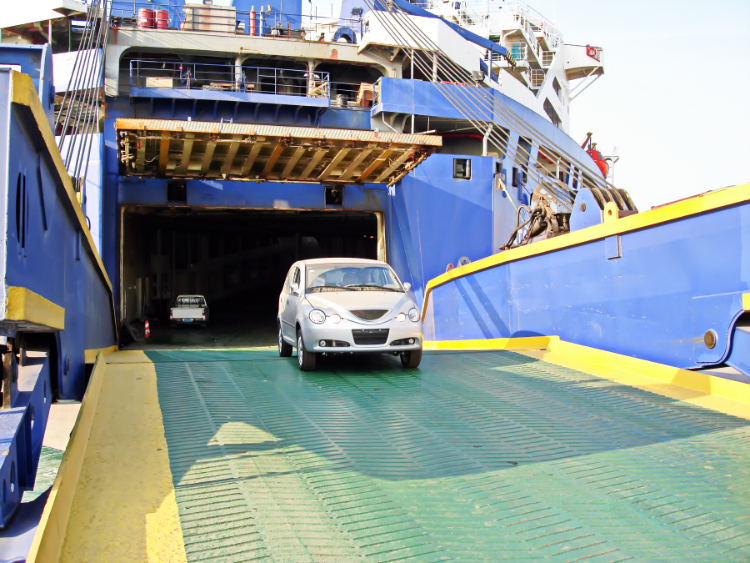When it comes to cargo transportation, most people immediately think of containers. However, other solutions exist in the field of logistics, such as RORO ships, which are particular to marine freight. RORO is an acronym for “Roll-on, Roll-off,” which indicates how a vessel transports wheeled goods like cars and vehicles.
Roll-on/roll-off (RORO) shipping is also less expensive compared to sole container shipping because your car is firmly braced onto a vessel without a protective container. Consider it a parking lot inside a ship’s hull. Your vehicle is driven on board the ship, fastened in position to keep it from shifting during the voyage, and then driven off to reach the destination port.
Compared to a combined moving container transportation, RORO is usually quicker. It is also the most cost-effective shipping method, but it provides less security for your car because it’s visible to the weather while traveling. It is, however, less time than sole container shipping. Roll-on/Roll-off car transport vessels frequently visit many ports or land in a location that is not your final destination.
What are the benefits of (RORO) shipping?
RORO vessels provide a number of advantages over traditional ships, the most notable are flexibility, speed, and total time savings:
• The automobiles can be driven directly onto the ship at the loading port and subsequently off at the destination port. The procedures for loading and unloading take only a few minutes.
• Because the cars exit swiftly after the ship docks, they can continue on their way to their destination right away. This way of operation reduces freight delivery time.
• Less cargo handling at the port for loading and unloading equals fewer accidents and cargo damage.
• Private vehicle owners or vacationers who travel with their automobile can ship it overseas on smaller RORO vessels and pick it up without having to go through lengthy paperwork.
What is the purpose of a RORO ship?
RORO ships are designed to transport automobiles, agricultural tractors, mining and road machinery, trucks, semi-trailer trucks and trailers, buses, industrial vehicles, lorries, and so on. Unlike LO-LO (lift-on/lift-off) vessels, RORO ships have a built-in ramp that allows the cargo to roll on and off the vessel:
- on their own wheels for self-propelled machines
- on handling equipment equipped with wheels for the machines that are not self-propelled. As a result, they stay on this equipment for the duration of the cruise.
The ramp can usually be located on the ship’s bow (front) or stern (rear), as well as on the sides or even on land. The ramp capacity on most RORO carriers is roughly 150 tons; however, it can reach up to 500 tons for particular vessels. The loading and unloading of the wheeled cargo are considerably easier and safer with these ramps than it is with a crane. Thanks to this new innovation.
You can find up to 13 decks on RORO ships. The majority of them can hold between 4,000 and 5,000 CEUs (car equivalent units). Some, though, can accommodate more than 8,000 automobiles.
Once a vehicle is on board, it travels to its designated spot via covered internal liftable ramps that connect the decks, much like a car park. Its placement is determined by its size, height, and weight. Lashings are then used to fasten it.
Overall, the use of (RORO) shipping is so beneficial. They provide a more secure, easier, and quicker transport for optimum quality services in the overseas international shipping.
